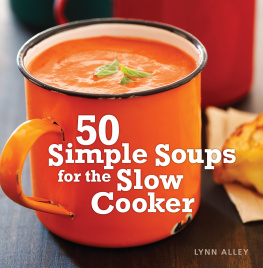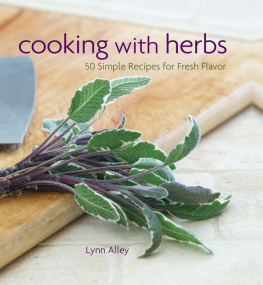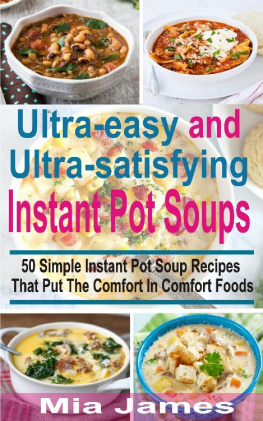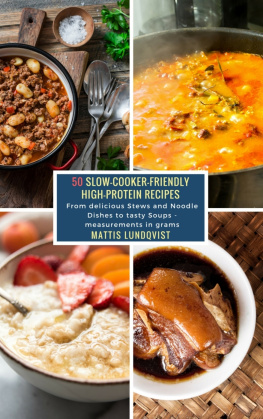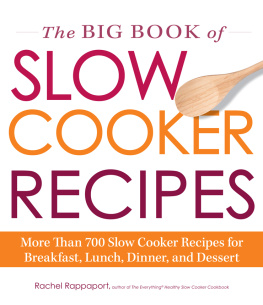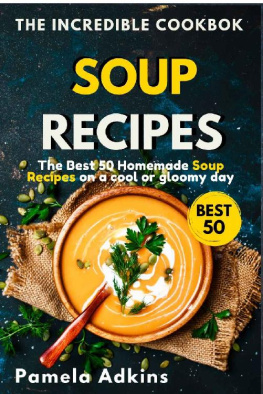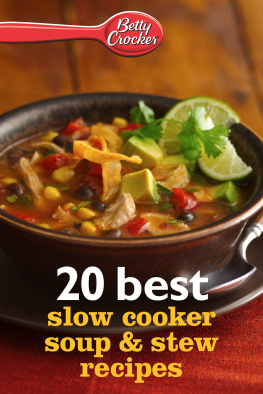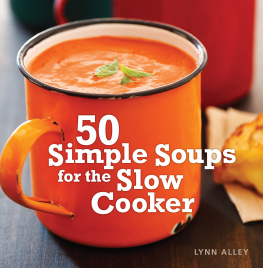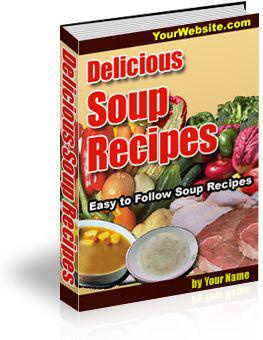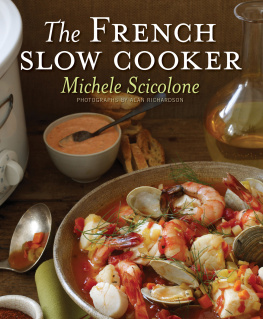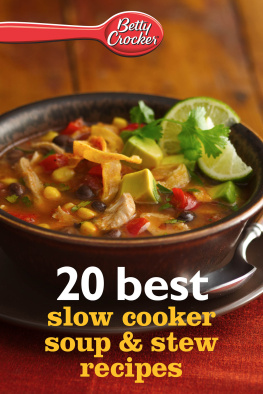Other Books by Lynn Alley
The Gourmet Slow Cooker
The Gourmet Slow Cooker: Volume II
The Gourmet Vegetarian Slow Cooker
The Gourmet Toaster Oven
Lost Arts: A Celebration of Culinary Traditions
Introduction
One of my favorite folktales is the beloved Stone Soup because it exemplifies just how easy it is to make a delicious soup out of almost nothing at all. A little rice, some tomatoes from the garden, a zucchini run amuck, some fresh spring herbs, some dried beans; anything and everything is fair game in a soup, whether one simple ingredient or a mlange of scavenged odds and ends.From the proverbial pot au feu bubbling away for days on the back of a French housewifes stove as scraps from each days meals were tossed in, ensuring that nothing edible went to wasteto the creations that I whip up in my kitchen today using a slow cooker and an immersion blender, soups are a surefire way to make comfort, economy, and warmth pervade even the most humble of homes.Soups are versatile, serving as everything from a first course, to a light lunch, to a hearty, stand-alone meal, to a dessert, and in some cases, even a breakfast.
I remember my surprise at finding green salad and miso soup on the breakfast buffet at Honolulus beautiful Halekulani Hotel, a traditional offering to the hotels Japanese guests. Soups can be casual or formal, creamy or full of texture, light or heavier, hot or cold. They can be loaded with complex flavors and techniques, or made of one ingredient.Easy on the Planet, the Palate, and the PocketbookI wanted to do a slow cooker soups book partly because I love soup so much and partly because I feel that many consumers today are looking for stuff that is easy to make, soul satisfying, and easy on the planet, the palate, and the pocketbook.There can be no question that soup can be easy on the pocketbook. A great soup can often be put together using nothing more than a bag of beans and some good spices, or a few leftovers with some bright vegetables. And I can usually get several meals out of a good slow cooker full of soup, eating some now and freezing some for another day. A simple bowl of soup will fill a hungry belly for just a few pennies worth of ingredients.As for the planet, a good vegetable-based soup is far easier on the planet than is a juicy beef stew, for reasons that have been well exposed by a number of experts, beginning with Frances MooreLapp in 1971 ( Diet for a Small Planet ) and John Robbins ( Diet for a New America ) in 1987.
It takes a heck of a lot more resources to put a pound of flesh on a steer than it does to grow an acre of lima beans or corn. Latest statistics show that vast tracts of necessary-to-our-survival rain forests in South America have been cleared to feed Americas burger habit, destroying not only our planets lungs but also the way of life of many indigenous cultures. Add to this the fact that you can often rely upon farmers markets for local produce, further reducing the impact on the planets resources made by trucking ingredients over long distances. The recipes in this book simply focus on fruits, grains, and vegetables, all of which offer a much greater array of colors, flavors, and textures than would meat, and all with minimal impact on the environment. When I taught cooking to middle school students many years ago, we talked about how meats basically have one color theme, and not a lot of variation in texture, whereas the plant kingdom offers reds, yellows, blues, purples, greens, and oranges, and all shades in between, and variations in texture that range from very soft like a banana, to hard like an apple, to the seeded insides of brightly colored pomegranates and passion fruits, to carrots and avocados, all kinder to the environment.I dont mean to say that if you think you would enjoy one of the recipes more with some of last nights roast chicken, a leftover ham bone, or a bit of fresh shrimp, that you shouldnt be encouraged to add it. My neighbor Kathy, who eats every soup I make, sometimes adds chicken (which she loves to grill) to the soups to give her added protein. But I did want to demonstrate that a soup based upon vegetables only can be very rich in flavor and texture without relying upon canned chicken stock and chunks of meat or bone.
Quite frankly, some of the best compliments Ive received have come from people who were just sure you couldnt make a good soup without meat. What follows are some of the tricks Ive used to infuse soups with rich flavors without meat.Much has been written about the value of organic growing methods; however, I think most consumers miss one very important point: synthetic fertilizers and pesticides were not created with your health in mind . While they have enabled us to produce large quantities of food and feed a greater number of people worldwide, they have also contributed to destruction of the environment and created havoc with human and animal health.This is not to say that many hardworking farmers would deliberately harm your health, but it is to say that your health is notthe farmers bottom line . Running his or her business is the bottom line. Keep this in mind and support those farmers who are willing to go the extra mile in the interests of keeping both you and the planet healthier for all concerned by using organic farming methods.As for the palate (as well as other senses), Ill let the recipes speak for themselves.Bang for Your Buck: Ways to Bump Up the FlavorProfessional chefs use a variety of cooking techniques to make the whole greater than the sum of its parts. Onions can easily be chopped and added to the soup raw, but if youd like to add an extra dimension of flavor, you can brown them in oil or butter first, anywhere from just softening them to giving them a nice golden hue.

